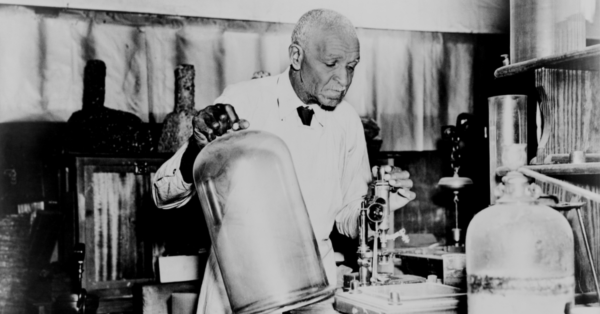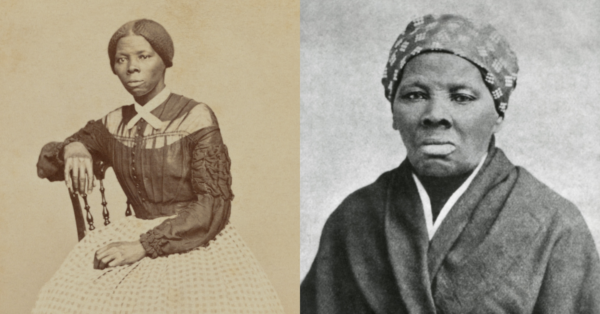If you’re looking for Black History Month facts for kids to share with your students, you’ve come to the right place! When it comes to ensuring the 7.4 million Black students enrolled in public schools in America see themselves represented in classroom discussions, even something as simple as making sure the “fact a day” on your classroom whiteboard is inclusive of Black history and culture can help make a difference.
With Black History Month on the horizon in February, the Teach Starter teacher team has compiled this list of facts to answer some of kids’ most frequently asked questions about Black history, plus a list of additional Black history facts for kids that teachers can easily incorporate into their lessons — not just in February but throughout the school year. We’ve included a mix of interesting facts for a variety of grade levels that are perfect for sprinkling into your Black History Month lessons or to support a variety of your social studies lessons.
When President Gerald Ford declared February Black History Month back in 1976, he said it was time to “seize the opportunity to honor the too-often neglected accomplishments of Black Americans in every area of endeavor throughout our history.” But in a survey in early 2022, two-thirds of Americans said they learned little about Black history when they were kids.
We know today’s teachers are working to change that, and this list can help.
Continue reading for the answers to the questions you might hear from your students and facts about some incredible individuals from our past and present. Feel free to pick and choose the facts that are right for the grade level you teach and the type of lesson at hand!
Why Is Black History Month in February?
This is a question we hear just about every February, so why is it that February is the month when we honor Black history here in the US?
There are plenty of history or heritage months throughout the year. For example, November is Native American Heritage Month, while we set aside March as Women’s History Month.
February was chosen for Black History because of two important men — activist and freedom fighter Frederick Douglass and President Abraham Lincoln. Both men were born in the month of February, and both men played a role in the abolition of slavery.
The decision to use their birth month to honor the history of Black Americans is a way of honoring them as well. In fact, Carter G. Woodson, the creator of what we now call Black History Month, slated what he then called Negro History Week at a time when many Black Americans were already honoring each of these two historical figures.
Your students may be surprised to know that the United States is not the only country to celebrate Black History Month in February. Since 1995, Canada has also marked Black History Month in the second month of the year.
Citizens of the United Kingdom also take time to honor Black history, but their history month is held in October.
What Are the Black History Month Colors?
Have your students asked you about the colors they keep seeing during Black History Month or the flag often depicted alongside commemorations?
There are four traditional colors of Black History Month, combining the colors of the Pan-African flag and the Ethiopian flag. The four colors are:
- Red
- Green
- Yellow
- Black
More Black History Month Facts for Kids
Sharing a new fact about Black History throughout February can help your students become more familiar with the work of Black leaders in American history, from politics to medicine to the art world and beyond. Here are some kid-friendly facts you may consider adding to your discussions or sharing on your whiteboard throughout the month.
Hint – Looking for supplemental resources? Just click the link on the word for a good from our teacher team!
1. Carter G. Woodson is known as the “Father of Black History” as he created the celebration that eventually became Black History Month. Graduating in 1912, Woodson was just the second Black American to graduate from Harvard University with a doctorate degree.
2. We have blood banks in America to help doctors and nurses save lives thanks to a Black physician named Charles Richard Drew. Dr. Drew created a way to store blood in the 1930s.
3. Barack Obama became the first Black president of the United States in 2008.
4. Our current vice president, Kamala Harris, became the first woman of African or Asian descent to become vice president in 2021.
5. The first Black American to serve on the Supreme Court was Thurgood Marshall. A lawyer who fought to end segregation in schools, Marshall was appointed as a justice in 1967 by President Lyndon B. Johnson.
6. The first female self-made millionaire in America was Madam C.J. Walker. Born to parents who lived in slavery before the Emancipation Proclamation, Walker grew up and created a line of haircare products for Black women like her.
7. Shirley Chisholm wasn’t just the first Black woman elected to Congress in 1968. She’s also the first woman to ever run for US president.
8. Students who love the Super Soaker water gun should love Lonnie Green — the Black American was an aerospace engineer for NASA who invented the popular toy.
9. The first Black person in space was Guion Bluford, an American astronaut who rocketed into outer space for NASA in 1983. During his time with NASA, Bluford logged more than 688 hours in space.
10. The red, yellow, and green traffic light that keeps traffic running smoothly today was invented by a Black man from Cleveland, Ohio named Garrett Morgan.
11. The first Black woman in America to earn a four-year college degree was Lucy Stranton. She graduated from Oberlin College with a literacy degree in 1850.
12. Black American and inventor George Washington Carver was the first non-president to have a national monument put up in his honor when the George Washington Carver National Monument was erected in Missouri in the 1950s. Carver was an agricultural scientist who created more than 500 new products from peanuts and sweet potatoes, including soap, paint and cooking oils.

13. We may not have the lights in our classrooms that we have today if it were not for a Black man named Lewis Latimer who worked for Thomas Edison. Latimer created the carbon filament inside the lightbulb that Edison is often credited with inventing.
14. Ruby Bridges was just 6 years old when she became the youngest Black child to desegregate a school in 1960. Every day for a year, four federal marshals had to escort little Ruby to school to keep her safe. Today she is a mom and grandma and a human rights activist.
15. Hurdler George Coleman Poage was the first Black person to earn a medal at the Olympic Games in 1904. Poage earned two bronze medals for the US Olympic team at the St. Louis games.
16. Between 1525 and 1866, it’s estimated that 12.5 million Africans were shipped to the New World to be forced into slavery.
17. The first known Black person born in the 13 colonies was William Tucker, who was born in Jamestown, Virginia, in 1624.
18. Although President Abraham Lincoln delivered the Emancipation Proclamation on January 1, 1863, enslaved people living in Galveston, Texas were not given their freedom until June 19, 1865. That is why we mark Juneteenth as a federal holiday today.
19. The first Black American to hold a patent was Thomas L. Jennings, who invented the process for dry cleaning fabric.
20. Famous singer and jazz pianist Nat King Cole was the first Black American to host a nationally televised TV show. The Nat King Cole Show debuted in 1956 on NBC but was canceled a year later.
21. Besides her famous work on the Underground Railroad, Harriet Tubman is considered the first African American woman to serve in the military thanks to her work as a nurse for the Union Army.

22. Mary Jane Patterson became the first Black woman to earn a Bachelor’s degree in 1862. The degree came from Oberlin College in Ohio.
23. Macon Allen became the first Black man in America who earned a license to practice law 1in 1845. He was admitted to practice in Boston, Massachusetts.
24. Hattie McDaniel was the first Black person to win an Oscar. A singer, songwriter and actress, she won the won the Academy Award for Best Supporting Actress in 1940 for her role in Gone With the Wind.
25. The first African American in the US to publish a book of poetry was Phillis Wheatley in 1773. Wheatley was kidnapped from her home in Senegal and enslaved by the American Wheatley family at just 7 years old.











Comments